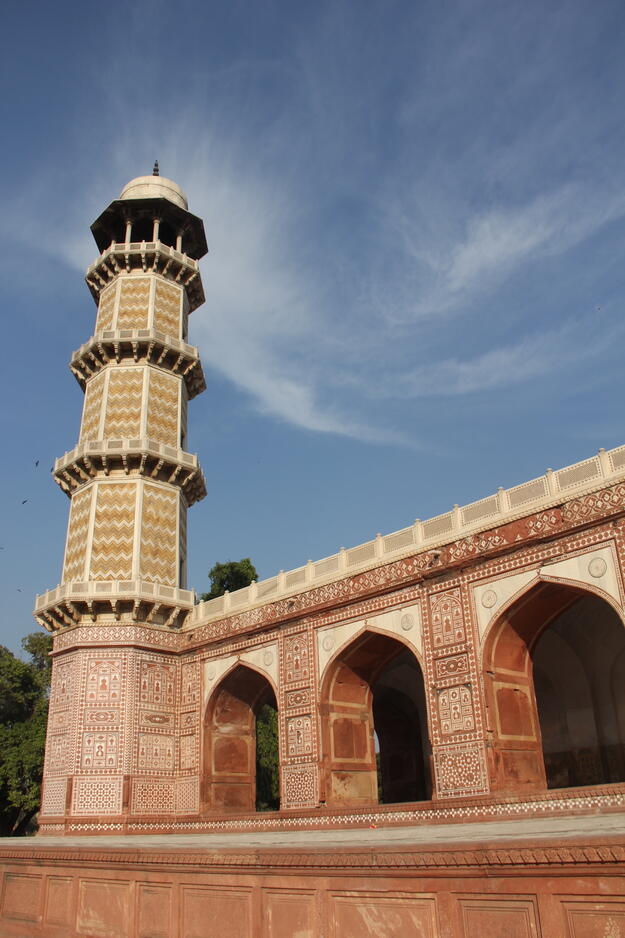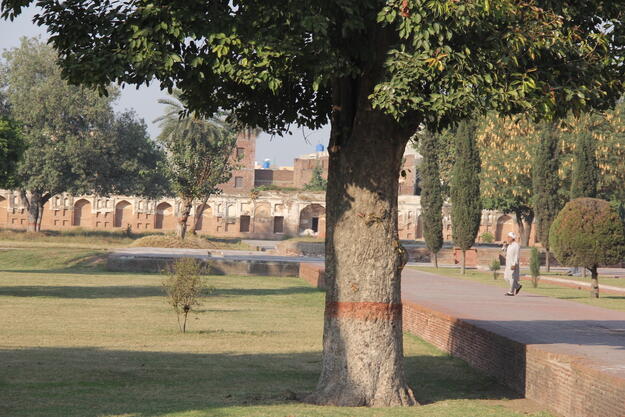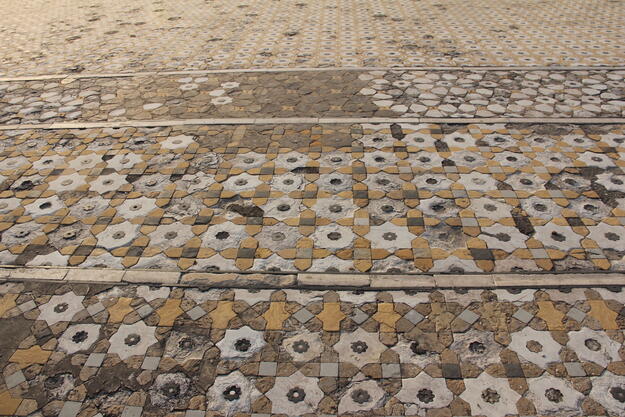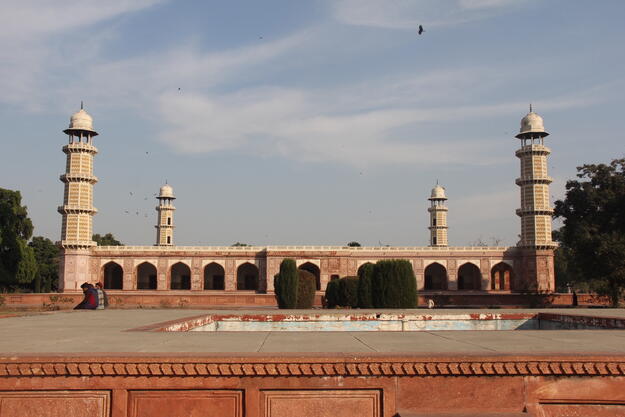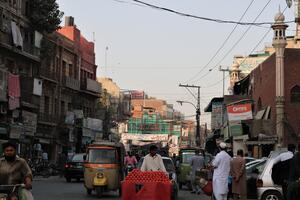Tomb of Jahangir
Site History and Significance
The Tomb of Mughal Emperor Jahangir
The tomb of Jahangir was built after the Mughal emperor’s death in 1627 and completed in 1637, in the reign of his son and successor, Shah Jahan, when the Mughal Empire held sway over the entire Indian subcontinent and Lahore was an important urban center. The emperor, a lover of nature, wished to be buried in Shahdara, until that time a precinct of pleasure gardens on the far side of the Ravi River from the fortified citadel of Lahore.
The tomb was placed in the center of a large, Persian-style garden, forming a tranquil setting for commemoration. The garden was laid out in four quadrants, based on the char bagh prototype established in Kabul under Babur, Jahangir’s ancestor and the founder of the Mughal dynasty. Each quadrant was subdivided into quadrants in turn, demarcated by water channels that symbolize the four rivers of paradise, with paved walkways laid alongside them and fountains placed at their intersections. Water from wells dug outside the perimeter was lifted onto channels that were built into the tops of the enclosure walls, and from there flowed thanks to gravity to the fountains and water channels at ground level. The tomb was placed at the principal intersection, in a single-story structure with corner minarets enclosing a white marble sarcophagus at its center. The building’s exterior is made of red sandstone with floral and other motifs inlaid in marble.
UNESCO World Heritage Candidate
The garden is accessed through a transitional space, known as the Akbari Serai, which is adjacent on its other end to the tomb of Mughal official Asif Khan, Jahangir’s brother-in-law. These monuments are part of the large collection of Mughal-era monuments that survive in Lahore, which is frequently praised as the cultural capital of Pakistan. Together, the three monuments and gardens form a candidate site for future inscription on the UNESCO World Heritage List.
Notwithstanding sporadic interventions over the years, the mausoleum structure remains in need of conservation and maintenance. The nearby river washed away the southeast part of the site as early as the nineteenth century and has often caused flooding in the garden, including a major event in 1988 when the tomb flooded for multiple days. On the other sides of the garden, Shahdara has grown into a densely populated city with houses and a cemetery built up against the perimeter wall of the site to the north and surrounding the Tomb of Asif Khan.
2022 World Monuments Watch
The 2022 World Monuments Watch highlights the opportunity for the site to serve the needs of this dense urban population through the rehabilitation and improved management of the garden, providing opportunities for recreation, exercise, education, and the experience of local culture, along with interventions needed to restore and preserve the mausoleum in a good condition.
![]()
Learn More
Through the World Monuments Watch, World Monuments Fund (WMF) collaborates with local partners to design and implement targeted conservation programs—including advocacy, planning, education, and physical interventions in the historic built environment—to improve human well-being through cultural heritage preservation.
Sign up for our newsletter to receive regular updates on our projects, stories from the field, upcoming events, and more!
![]()

